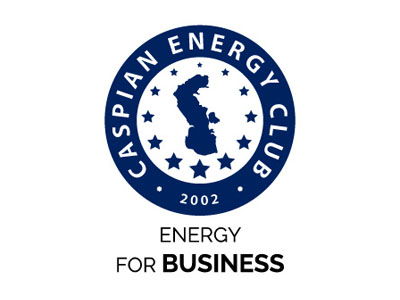As is well known, the Trans Adriatic Pipeline (TAP) transports natural gas from the giant Shah Deniz 2 field located in the Azerbaijani sector of the Caspian Sea to Europe. This pipeline, stretching approximately 877 kilometers, connects to the Trans Anatolian Pipeline (TANAP) at Kipoi on the Greek-Turkish border and runs across Greece, Albania, and the Adriatic Sea, reaching southern Italy.
TAP links with the Greece–Bulgaria Gas Interconnector (IGB), which entered commercial operation in October 2022. TAP’s exit points in Greece and Albania, along with its landfall in Italy, offer multiple opportunities for the onward transportation of Azerbaijani natural gas to wider European markets. By 2027, TAP's capacity is expected to increase to 16–20 billion cubic meters per year. At present, Azerbaijan supplies natural gas to 12 countries. The shareholders of TAP are the following companies: BP (20%), SOCAR (20%), Snam (20%), Fluxys (20%), and Enagás (20%).In January–June, Azerbaijan exported 12.3649 billion cubic meters of natural gas, which is 4.6% more than in the same period last year. For comparison, during January–June 2024, gas exports from Azerbaijan to Europe amounted to 6.4 billion cubic meters. The volume of Azerbaijani natural gas supplied to Europe in the current period increased by 12.2% compared to 5.7 billion cubic meters in January–June 2023. The growth in renewable energy consumption in the EU is contributing to a decline in pipeline gas imports, while the recently signed transatlantic agreement is expected to further minimize pipeline supplies — not only from Russia. On July 25, the European Union and the United States signed an agreement on the "systematic limitation" of Russian natural gas imports via third countries and on increasing U.S. LNG supplies to Europe.
In the case of Greece, according to estimates based on market prices and import volumes of natural gas, the cost of the agreement amounts to €800 million per year. This is the amount Greek consumers and industry will have to pay additionally during the upcoming period when the agreement takes effect and pipeline-delivered Russian gas is replaced by more expensive U.S. LNG. In this context, transatlantic energy supplies will contribute to raising the competitiveness threshold for renewables. This is evident from the examples of Greece and Italy (which is also expanding its solar capacity), where the share of natural gas in the energy mix of Southeastern European countries is clearly set to decline at an even faster pace.
According to an analysis by the Greek organization Green Tank, in the first half of 2025, renewables ranked first in electricity generation, with a total output of 12,435 GWh. Compared to the same period last year, this represents a slight increase from 12,354 GWh.
The volume of fossil gas, with a total production of 10,925 GWh in the first half of the year, reached its highest level in the past decade. At the same time, Greece recorded a record net export for the decade — 783 GWh.
Oil, with a total generation of 1,576 GWh in the first half of the year, ranked third in electricity production after renewables and gas. Large hydroelectric power plants and lignite reached similar production levels — 1,463 GWh and 1,413 GWh, respectively. Lignite extraction in the first half of the year fell to its lowest level in a decade.
Large-scale hydroelectric power generation declined compared to the first half of 2024 (1,810 GWh), while lignite production remained steady at the level of the same period last year (1,498 GWh).
At the same time, the further strengthening of the European energy system is supported by key infrastructure projects actively involving Greece, such as the Greece-Bulgaria Interconnector (IGB), the commissioning of the FSRU gas terminal in Alexandroupolis, and the expected completion of the gas interconnector with North Macedonia in March 2026.
The Greek economy is expected to grow twice as fast as the European average in 2025: the European Commission forecasts growth of 1.1% for the EU and 0.9% for the Eurozone. For 2026, growth is projected at 1.5% for the EU and 1.4% for the Eurozone. Inflation in the EU is expected to be 2.1% in 2025 and 1.7% in 2026, with similar dynamics anticipated for the Eurozone.
Italy and Greece are the primary markets for Azerbaijani gas in the EU, so the economic growth of these countries will stimulate increased industrial consumption of natural gas and its supply. Therefore, the implementation of new Caspian gas projects remains highly relevant. The Memorandum of Understanding on strategic energy partnership between the EU and Azerbaijan was signed on July 18, 2023, in Baku. It is expected that by 2027 Azerbaijan will increase its gas exports to the EU by at least 20 billion cubic meters per year. The Trans Adriatic Pipeline (TAP), approximately 520 kilometers long, ensures uninterrupted gas transportation at all connection points with the national systems in Italy and Greece. By the end of 2024, a total of 40.47 billion cubic meters of gas had been transported via TAP from the Greek-Turkish border to Kipoi, of which 33.76 billion cubic meters were transported to Italy through Albania, 3.9 billion cubic meters to Greece, and 2.5 billion cubic meters were directed to Bulgaria.




